Posted by Mary Demakes on May 4, 2017

May is the official month of the Mediterranean Diet. Many studies have found that the diet based on the lifestyle of Mediterranean people in the 1960s is efficient in reducing the risk of heart diseases, slowing aging and improving overall health. Its main focus is a natural, balanced diet which will prevent or even cure physiological problems and provide whole-range health.
“At the present time, the U.S. health system almost entirely ignores nutrition in favor of pharmacology and is hugely expensive and ineffective compared with the systems in other countries,” wrote Dr. Walter Willett of Harvard School of Public Health. “Integration of the Mediterranean diet and related dietary patterns into medical practice, hospitals, schools and other institutions has the potential to improve well-being.”
If compared to other healthy diets, the Mediterranean appears to be the most effective. It was determined according to researchers at Brigham and Women’s Hospital in Boston, who surveyed the eating habits of more than 4,600 women of the long-running Nurses’ Health Study. This and other studies have proven the Mediterranean diet to be a much better option than the standard low-fat diet, especially when comparing disease prevention and longevity. The diet has also shown to be successful in preventing major cardiovascular diseases, as well as protecting memory and thinking skills.
Studies and Conclusions
-
PREDIMED Study
It happened for 5 years, with 7447 individuals who were at a high risk of cardiovascular disease and would follow either: a Mediterranean Diet with added extra virgin olive oil, a Mediterranean Diet with added nuts, or a low-fat control group diet.
Conclusions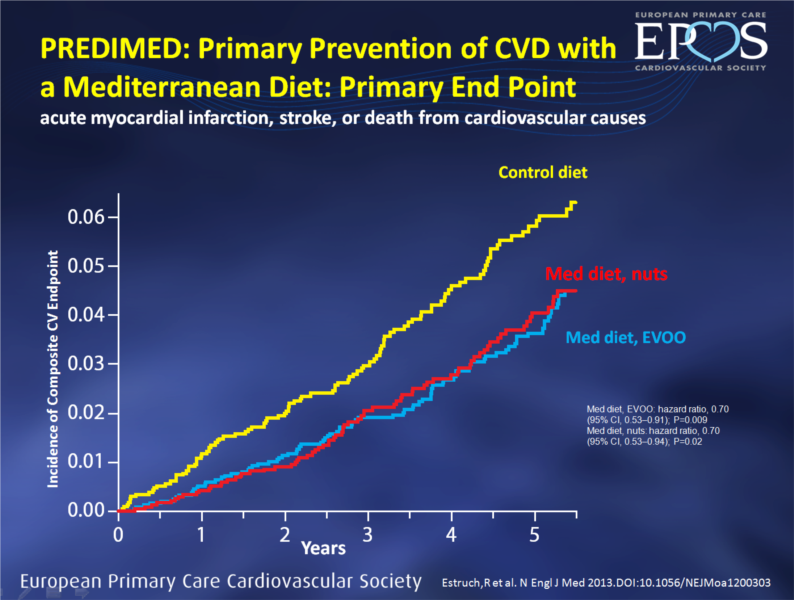
A Mediterranean diet with either olive oil or nuts may reduce the combined risk of stroke, heart attack and death from cardiovascular disease
A Mediterranean diet may help to reverse the metabolic syndrome.
The Mediterranean diet caused reductions in oxidized LDL cholesterol (which causes inflammation and diseases), along with improvements in several other heart disease risk factors.
A Mediterranean diet without calorie restriction appears to be effective in preventing the development of type 2 diabetes.
Compared to a low-fat control group, a Mediterranean diet can have beneficial effects on various risk factors for cardiovascular disease.
Consuming nuts was associated with a significantly reduced risk of death over a period of 5 years.
-
Weight Loss with a Low-Carbohydrate, Mediterranean, or Low-Fat Diet
The New England Journal of Medicine, 2008.
It involved 322 obese individuals who were randomly assigned to a calorie restricted low-fat diet, a calorie restricted Mediterranean diet, or an unrestricted low-carb diet.
The low-fat group lost 2.9 kg (6.4 lbs), the low-carb group lost 4.7 kg (10.3 lbs) and the Mediterranean diet group lost 4.4 kg (9.7 lbs). Diabetic participants had improved blood glucose and insulin levels on the Mediterranean diet, compared to the low-fat diet.
Conclusion
A Mediterranean diet may be more effective for weight loss and improving symptoms of diabetes, when compared to a low-fat diet.
There is already information about diets which use concepts from both Mediterranean and Low-Carb points of view to try achieving even better results.
-
Mediterranean diet may be best for memory and cognitive skills
Neurology, 2013
The study was of 17,478 Caucasian and African-American subjects and lasted 4 years.
Conclusion
It found that adults who closely followed a Mediterranean diet were 19 percent less likely to develop memory and cognitive problems later in life. Subjects with diabetes had no cognitive improvements from the diet — about 17 percent of the subjects enrolled on the study had diabetes, and those who already had cognitive problems would probably not benefit from jumping on the diet.
However, there are many studies that a low-carbohydrate diet would reduce brain damage and even cure mental diseases, thus the connection of both would be an interesting idea.
The Diet
 The basic principle of the Mediterranean diet is to use a wide range of fruits and vegetables, which gives the body maximum access to sources of vitamins, minerals and other trace nutrients. There are individual foods within the Mediterranean Diet which are particularly beneficial to health, such as olive oil, garlic and some fruits and vegetables but overall it is the combination of foods within a healthy lifestyle which is linked to improved health.
The basic principle of the Mediterranean diet is to use a wide range of fruits and vegetables, which gives the body maximum access to sources of vitamins, minerals and other trace nutrients. There are individual foods within the Mediterranean Diet which are particularly beneficial to health, such as olive oil, garlic and some fruits and vegetables but overall it is the combination of foods within a healthy lifestyle which is linked to improved health.
The Mediterranean Diet is not about quick fix superfoods. Nor is it a strict list of what you should not eat. Rather, the Mediterranean Diet is a formula for healthy day-to-day eating over the long term. The major foundation of it is: eat NOTHING PROCESSED!
Some other guidelines are:
Maximize your intake of vegetables, peas and beans (legumes), fruits and wholegrain cereals.
Limit your red meat intake – fish and poultry are healthier substitutes.
Where possible, use mono-unsaturated olive oil or rapeseed oil.
Limit/Eliminate your intake of highly processed foods and ready meals, which may be high in salt and saturated fat.
Do not add salt to your food at the table – there is already plenty in the food.
Snack on fruit, dried fruit and unsalted nuts rather than cakes, crisps and biscuits.
Drink (red) wine during meals but no more than two small glasses per day.
Water is the best ‘non-alcoholic beverage’ (as opposed to sugary drinks), although health benefits have also been claimed for various teas and coffee.
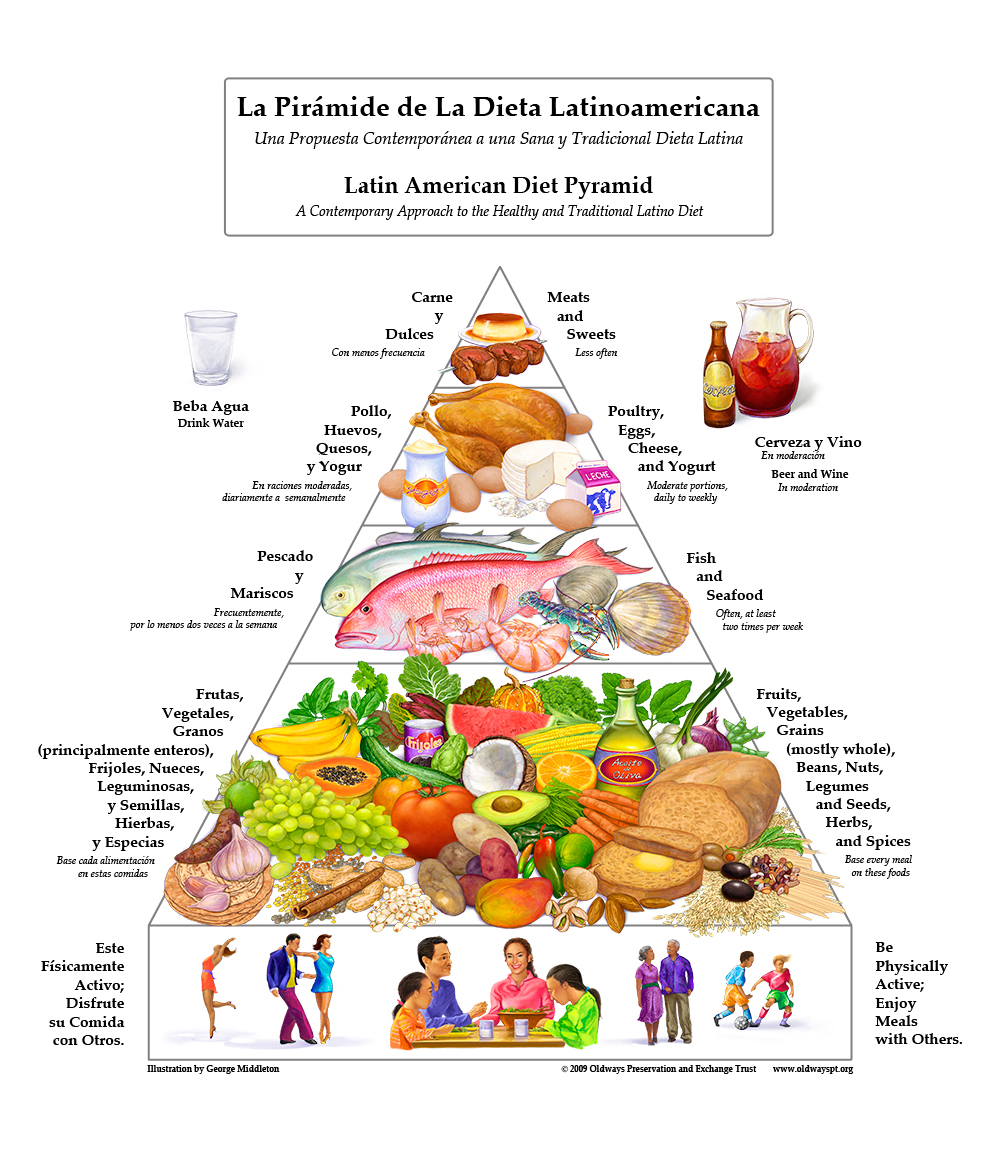
The most interesting aspects of the Mediterranean Diet – actually a lifestyle – is that it highly recommends people to be active (at least 30 minutes a day) and, most importantly, to truly enjoy their meals. It means to take the time to socialize with others and have a good digestion.
In a nutshell, the Mediterranean Diet provides your body with the essential nutrients it needs for a full-potential, enjoyable, and lifelong health. It is achieved by focusing on right-from-the-source foods, such as fruits, vegetables, and good fats. Thus, by increasing the consumption of good nutrients and antioxidants, and decreasing the toxins, it is obvious that there are going to be many health benefits. The active and social lifestyle is also very important for hormonal balance and the body’s homeostasis.
Start this month well by giving the Mediterranean lifestyle a try, and enjoy its benefits!
(more…)

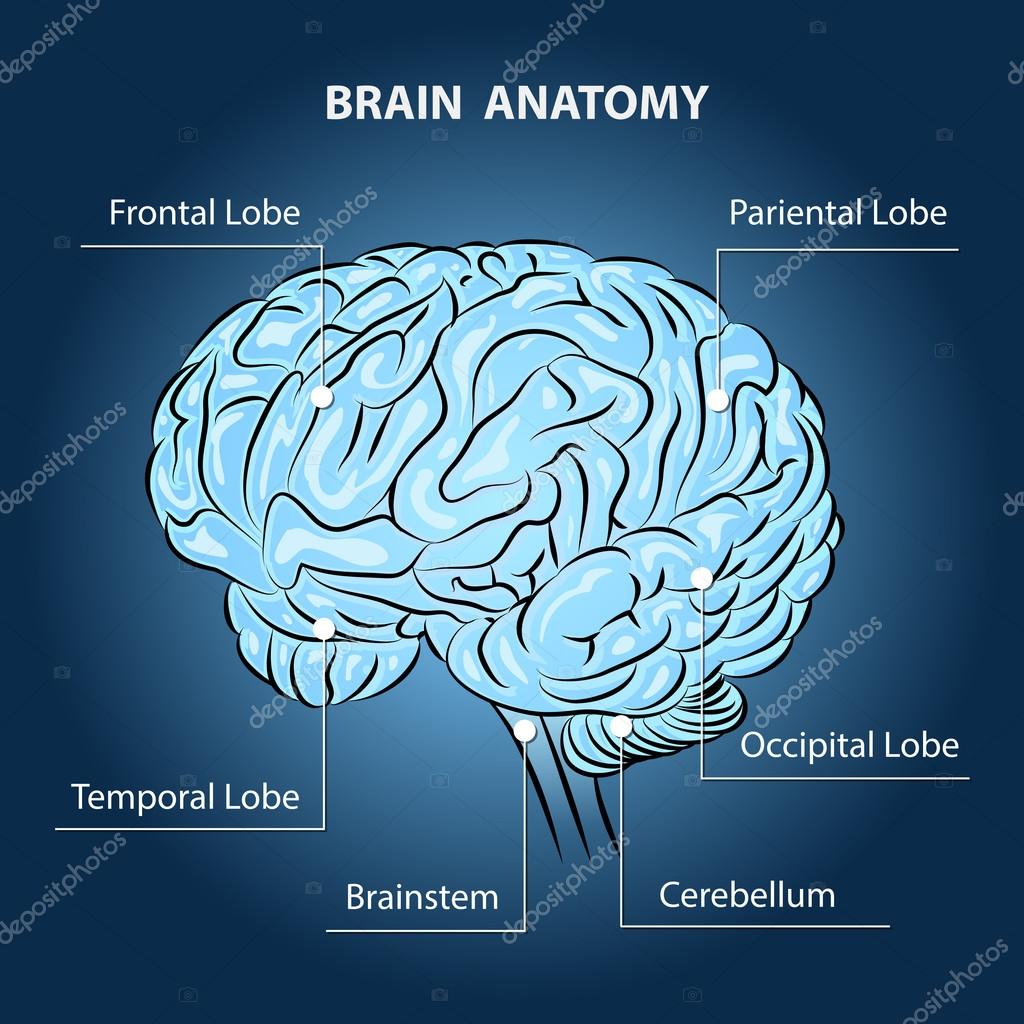
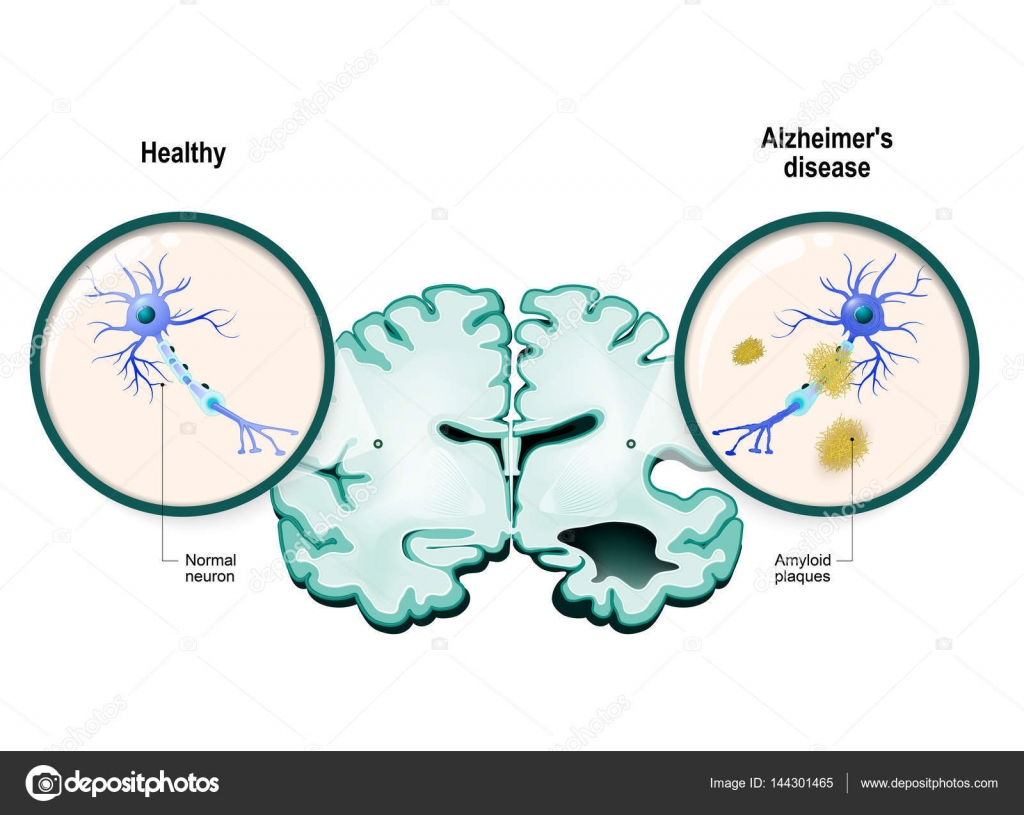
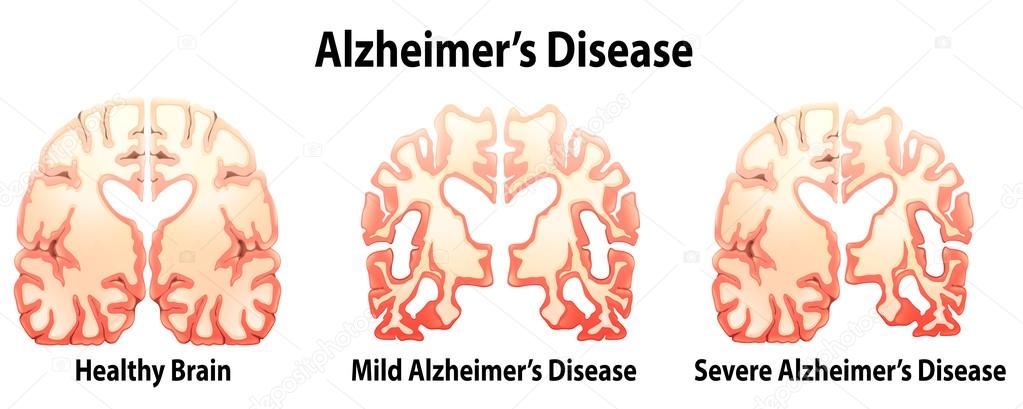
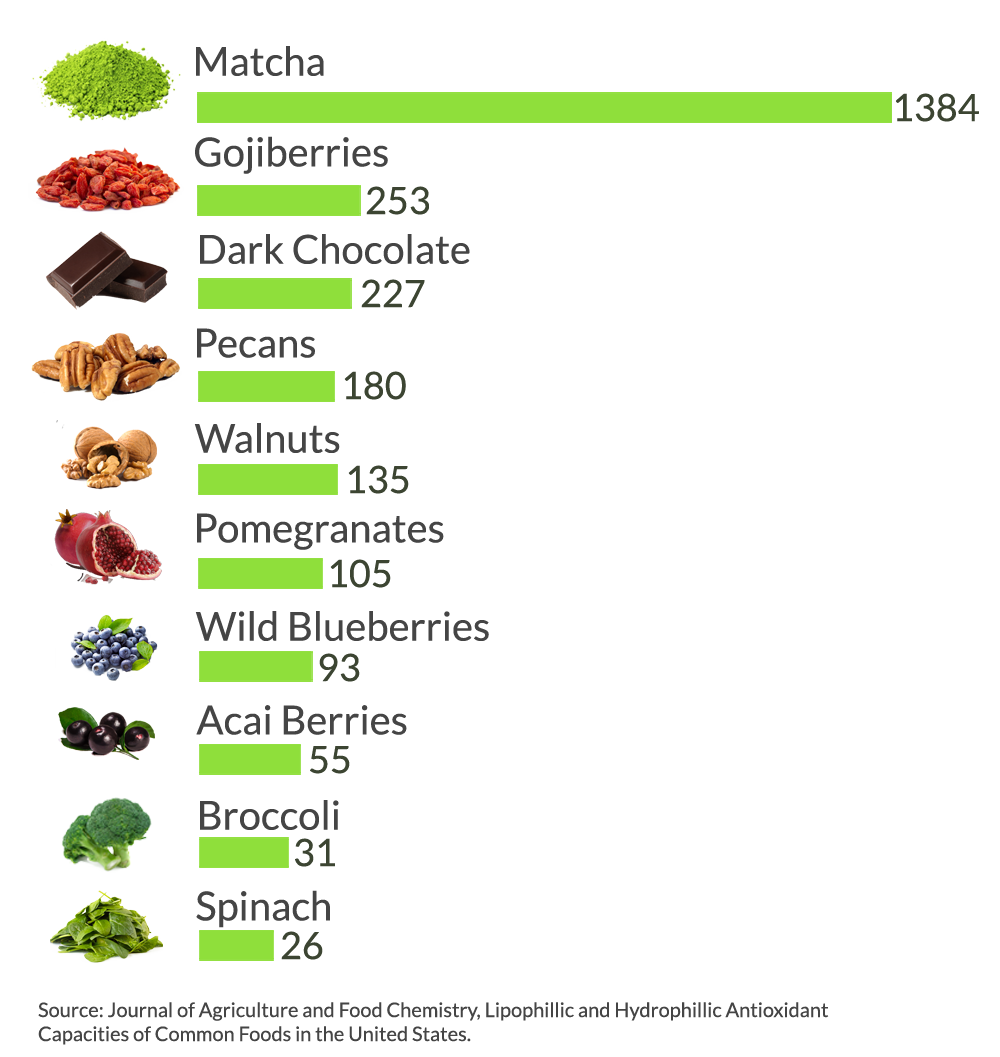
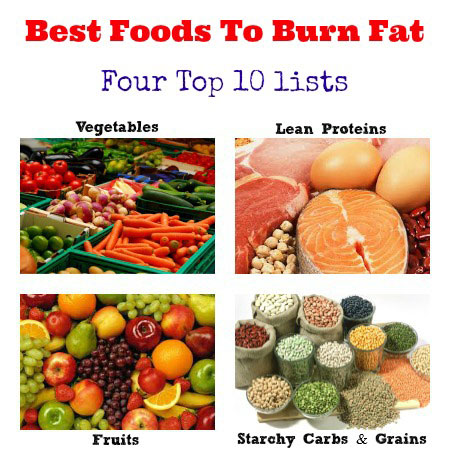
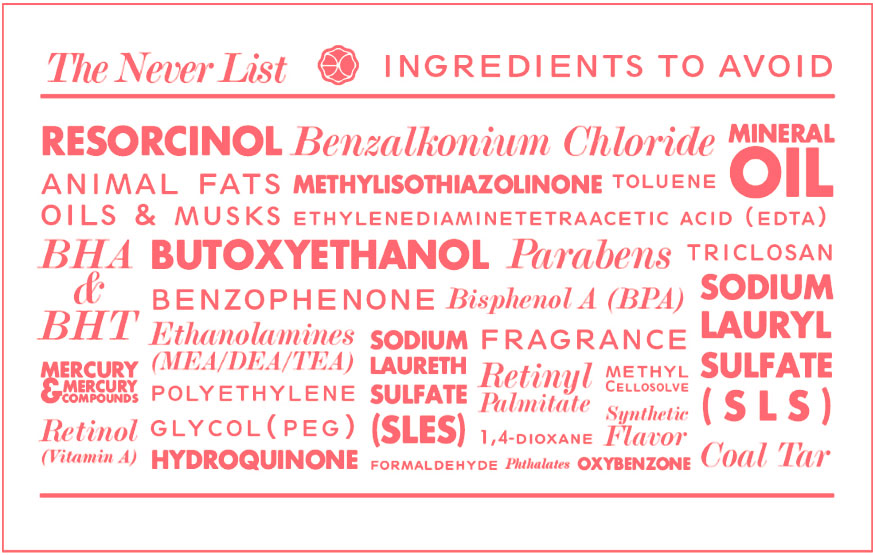











 The basic principle of the Mediterranean diet is to use a wide range of fruits and vegetables, which gives the body maximum access to sources of vitamins, minerals and other trace nutrients. There are individual foods within the Mediterranean Diet which are particularly beneficial to health, such as olive oil, garlic and some fruits and vegetables but overall it is the combination of foods within a healthy lifestyle which is linked to improved health.
The basic principle of the Mediterranean diet is to use a wide range of fruits and vegetables, which gives the body maximum access to sources of vitamins, minerals and other trace nutrients. There are individual foods within the Mediterranean Diet which are particularly beneficial to health, such as olive oil, garlic and some fruits and vegetables but overall it is the combination of foods within a healthy lifestyle which is linked to improved health.